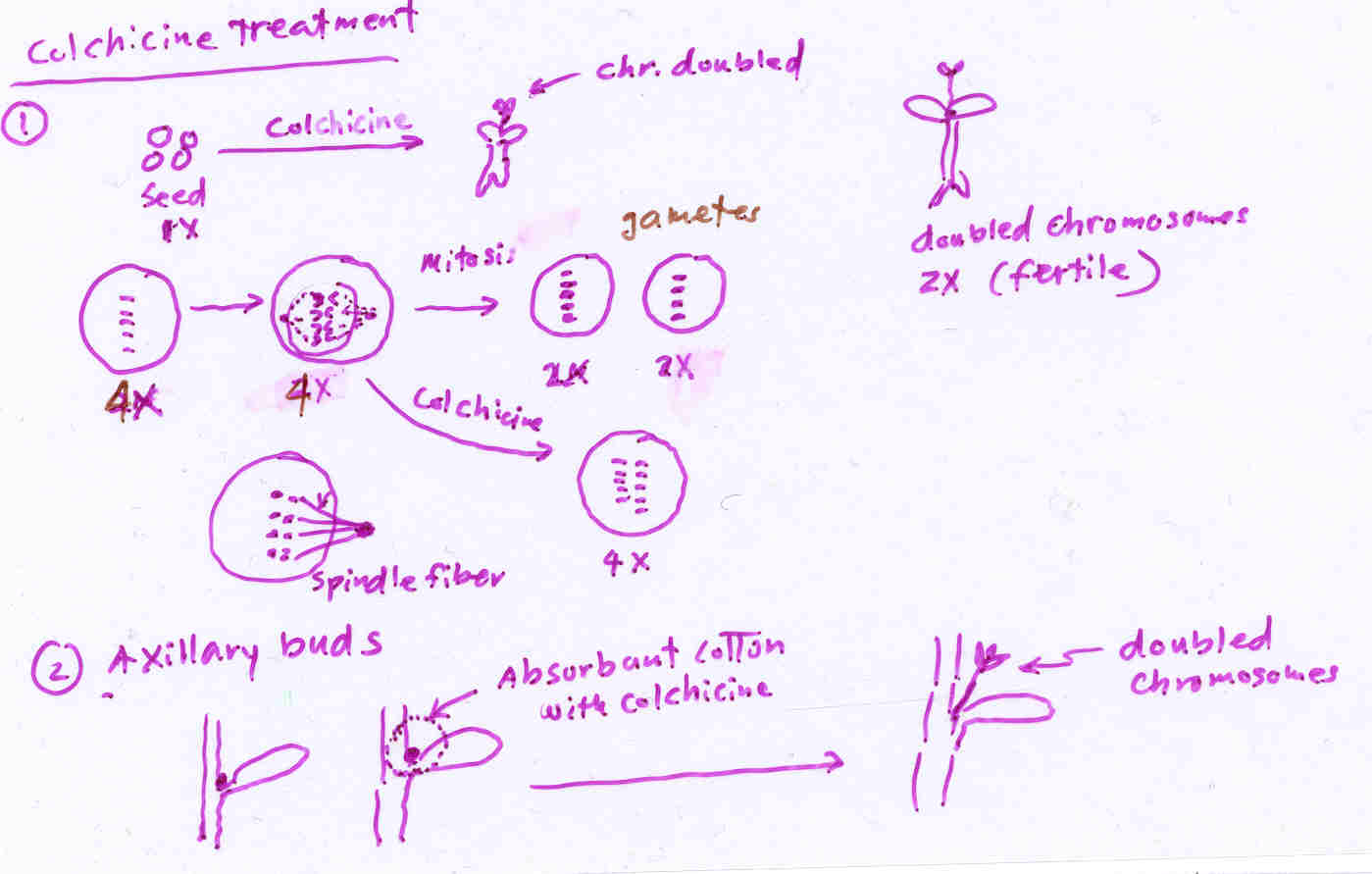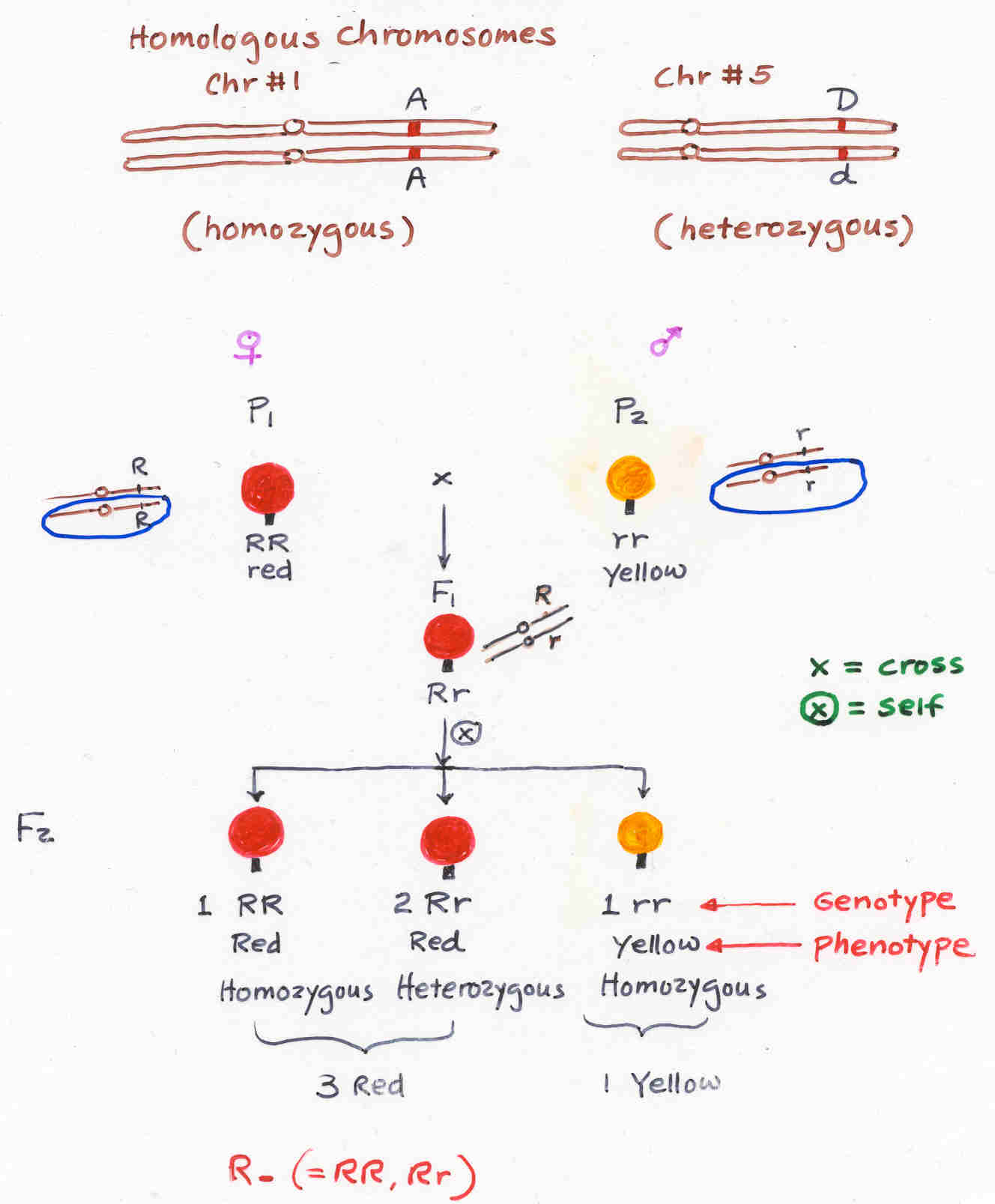BIOLOGY OF PROPAGATION
I. GENERAL TERMINOLOGY
A. Genotype- the genetic makeup of an organism
B. Phenotype- Theexternal appeance of an organism expressed as the interaction of genotype and environment
C. Ploidy- Variation in the genomic number (x) of chromosomes
D. Homozygous- Having like alleles at corresponding loci on homologous chromosomes
E. Heterozygous- Having unlike alleles at one or more loci on homologous chromosomes
F. Meiosis-
Reproductive
cell division (Reduction division)
1) Chromosome number is reduced to half
2) Results in formation of gametes (pollen, egg cell)
3) Allows genetic recomibination
G. Mitosis-
Somatic cell division
1) Chromosome number same in daughter cells
2) Results in somatic tissues genetically identical to parent cells
3) Allows clonal duplication
II. NOMENCLATURE
ICBN- International Code of Botanical Nomenclature
A. Botanical Classification
B. Cultivated Plants
Genusspecies cultivar (generally trinomial)
Cultivar = Cultivated variety
Cultigen = Cultivated variety that had been naturalized
Syringa vulgaris cv. Mont Blanc
Syringa vulgaris 'Mont Blanc'
Lilac 'Mont Blanc'
III. KINDS OF CULTIVARS
A. Line-
self pollinated seed propagated cultivar (homozygous)
i.e. inbred lines
synthetic lines
B. Hybrids-
(sexual)
F1 hybrid- first generation progeny from a cross between 2 inbred
lines (Single cross)
C. F2
Cultivars (sexual)
cultivars made from self-pollination of an F1
D. Open
Pollinated Cultivar (sexual)
Cultivar made up of seeds formed by open pollination. (can be mixtures
fo hybrids, selfs)
E. Clonal
Cultivars (asexual)
Clone-
plants propagated by asexual means (ex. cuttings, tuber, bulb, rhizomes,
grafts, cormel, stolon)
F. Apomictic
Seeds (asexual)
Seeds formed from maternal tissues (ovule)
IV. REQUIREMENTS FOR CULTIVAR
A. Distinct- Morphologically, physiologically different characteristics
B. Uniform-
Homogeneity
variation should be minimal
Homogeneous- (but can be heterozygous as in F1 )
Homozygous
C. Stable-
A
reasonable degree of reliability
Reproducible performance
D. Commercial-
Must have agronomic or horticultural value






